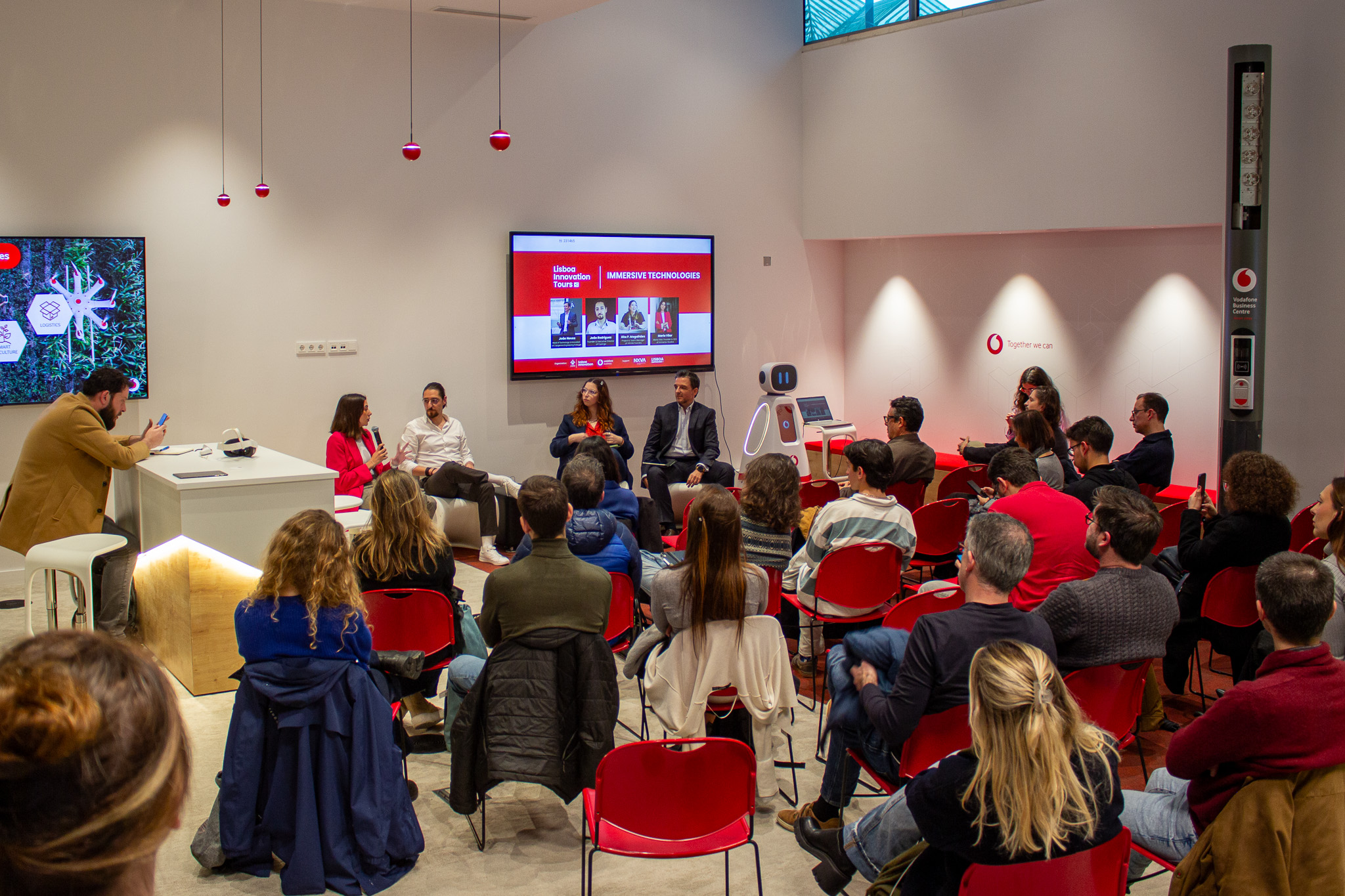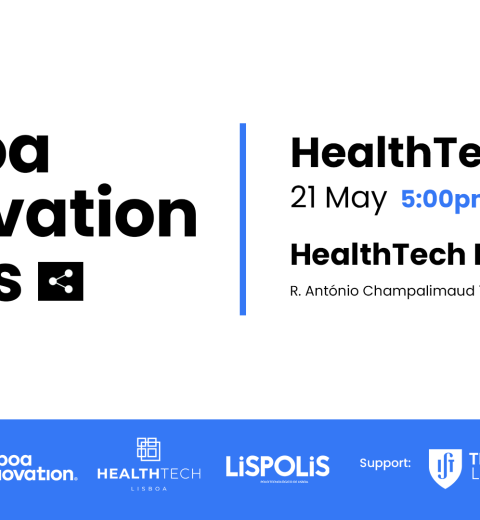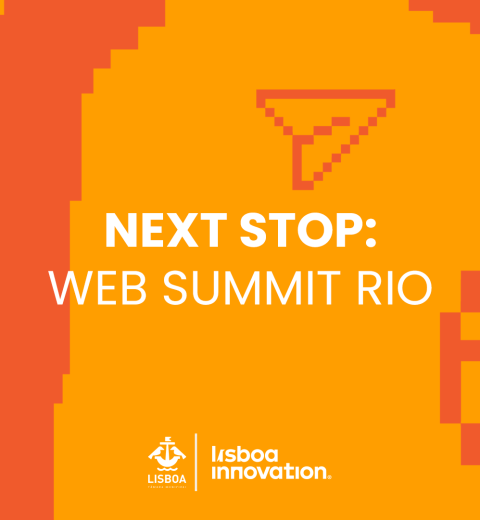Immersive technologies have become one of the most sought-after digital resources across various sectors. From real estate asset management to Culture and Healthcare, Augmented Reality (AR) and Virtual Reality (VR) – two key examples of immersive technologies – are proving to be essential tools in our daily lives.
Imagine the experience of buying furniture online. The ability to visualize the object we want to purchase becomes much easier, as we can examine it from different angles in a 360-degree view using Virtual Reality. Even if we are miles away from the object, a single click brings us closer, allowing us to see every tiny detail.
Immersive technology transports us into the digital world, creating a sensory perception of reality for the user (primarily through vision). This was precisely the theme of the February Lisboa Innovation Tour, which took place at the Vodafone Innovation Center. There was no need to put on goggles to dive deep into this fascinating new world and explore the perspectives of experts in the field.
João Neves, Head of Technology & Innovation and Executive at Capgemini Engineering Portugal, João Rodrigues, Founder & Executive Director of Cyango, and Rita P. Magalhães, Project & Team Manager at Infinite Foundry, engaged in an open discussion on the impact and opportunities these technologies bring to Lisbon’s innovation ecosystem. The conversation was led by Maria Vilar, Founder & CEO of Immersiv Studios.
One of the most interesting uses of immersive technology was presented during the event: the Hedge project, developed by Universidade Nova de Lisboa as part of the Cultural Heritage 360 Program. This initiative involves digitizing movable cultural assets from 65 museums, monuments, palaces, and archaeological sites across Portugal, making them universally and freely available online.
IT is everywhere. But what is the biggest challenge today? “The price—both in terms of hardware and software. Both are still expensive. Additionally, within the IT field, wearables are not yet widely adopted,” says João Rodrigues.
However, experts predict that wearable augmented reality devices—such as Ray-Ban-style sunglasses that take photos, record videos, and play music with voice activation—will be a major trend by 2025.
When discussing challenges, João Rodrigues, who is a founder in this field, offers a clear perspective: “Large companies have the bulk of funding to invest in immersive technologies. They can support the costs that come with the inevitable and unstoppable obsolescence of gadgets and software. The same does not apply to smaller companies.”
He gives his own experience as an example: “I built this platform (Cyango) in 2017 and bought a 360 camera for virtual tours, but I quickly realized that we had invested in a technology that very quickly became outdated. In other words, we have to be in constant evolution, and that costs money,” he emphasizes.
For Rita Magalhães from Infinite Foundry, cities and their local authorities can play an important role in addressing the challenges faced by the IT entrepreneurial ecosystem: “Lisbon should retain more talent in this field, work with other markets, and invest in innovation. IT is highly useful for cities in terms of mobility, security, and sustainability. It can even serve as a true public service.”
João Neves, from Capgemini, echoes this sentiment, stating that the Portuguese capital “is particularly well-positioned to attract talent. Why not become an innovation hub in this field?!” he asks.
Like Artificial Intelligence, IT also raises regulatory concerns—such as personal data protection, cybersecurity, and avatars. These are common issues for which there is still little legislation. “I know that the European Union is concerned and working on this, but there is nothing concrete yet. We need to be careful because, just like on social media, in the metaverse, we also don’t know who is on the other side,” concludes Maria Vilar.






